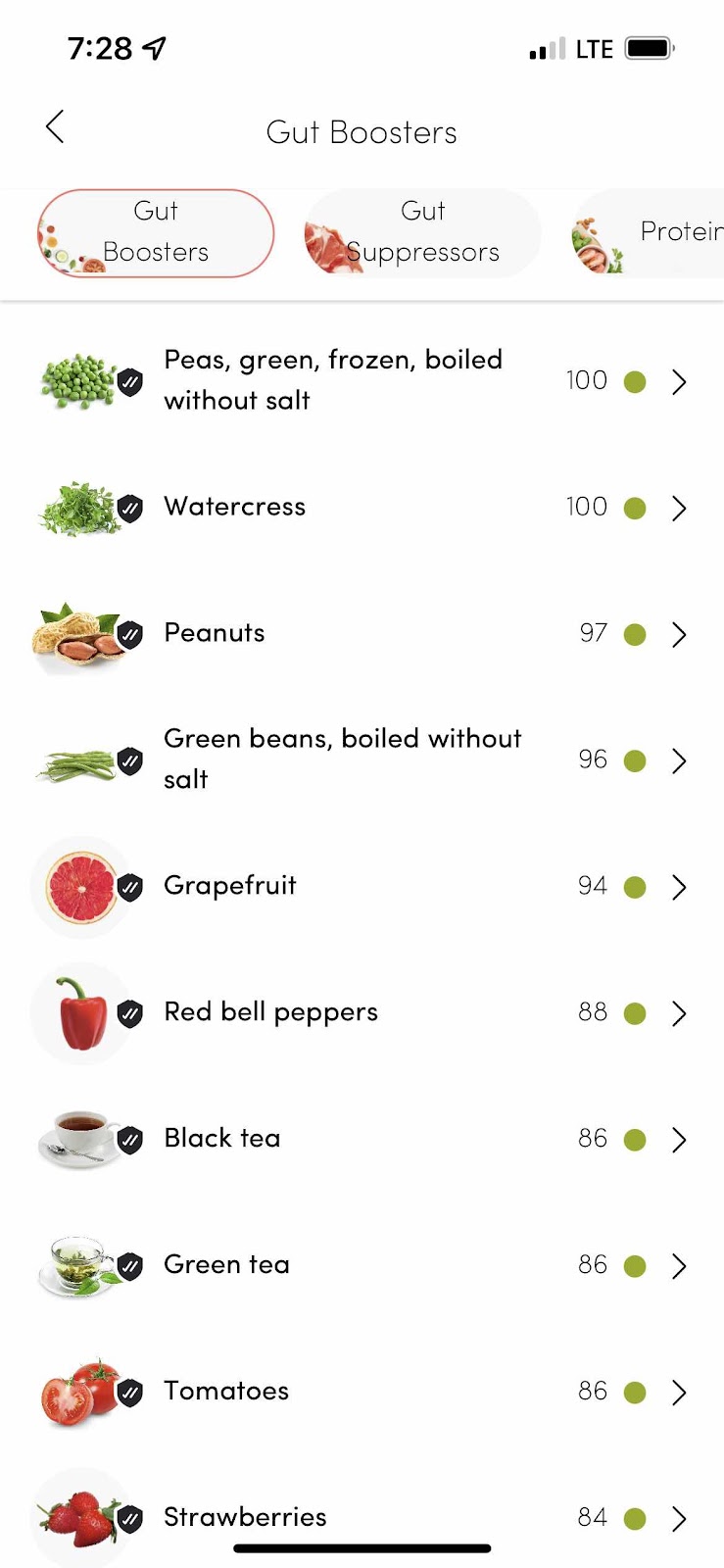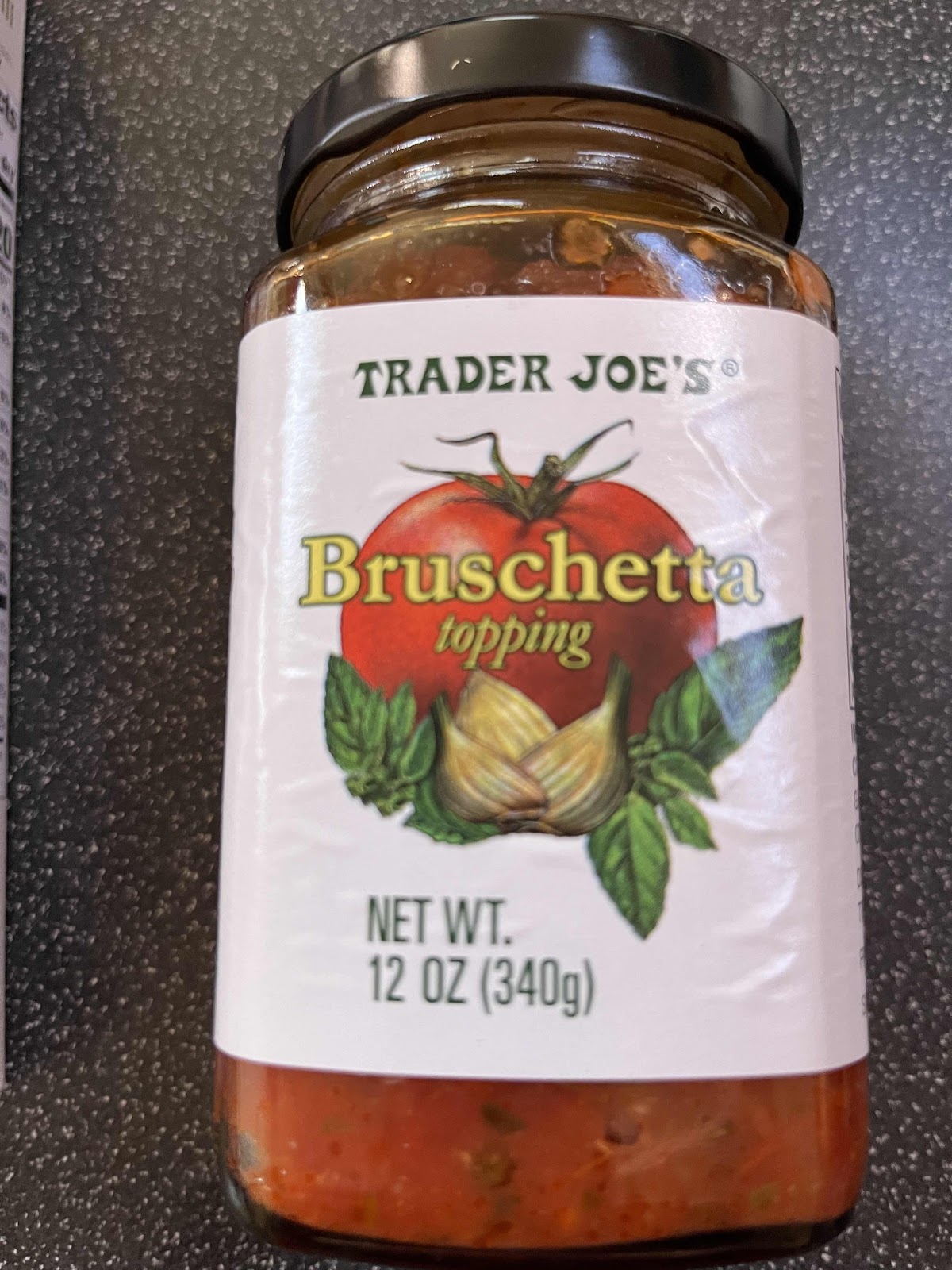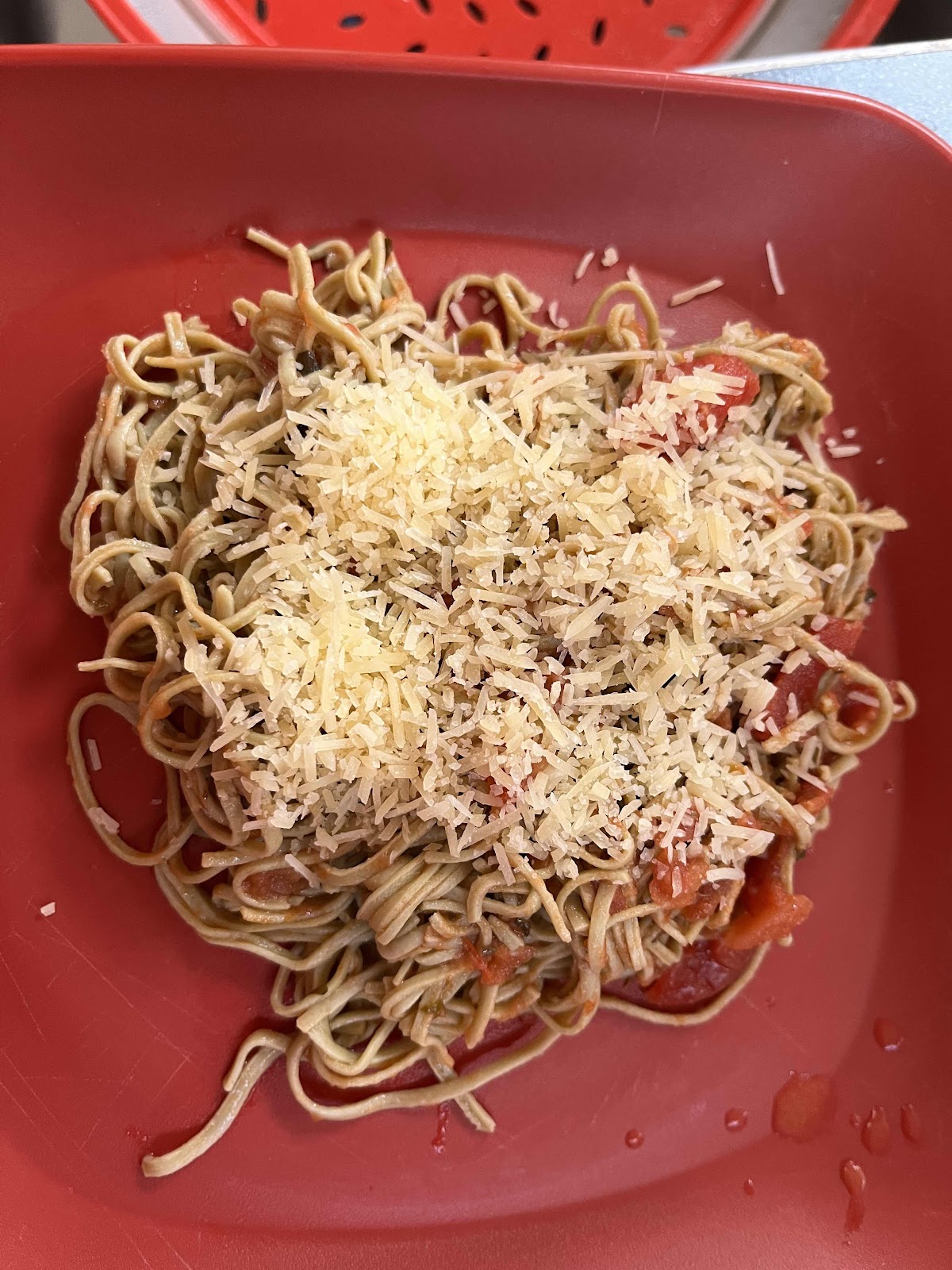In a recent post I mentioned how a personalized nutrition program I started this summer led to a major revamping of our provisioning list. A friend suggested I write a post about it, so here it is.


Example page from my app. This is a list of foods which my “good” microbes love.

I used to eat brown rice pasta but that scores low for me. I have been eating this edamame pasta instead and it not only has a good score, it tastes good, too!

Our daughter gave us this idea of using this instead of pasta sauce.

Very easy dinner of edamame pasta with bruschetta and Parmesan.
About 18 months ago I saw a 15-year-old photograph of myself when I weighed 25 pounds less. My first thought was “I looked good then. I want to look that good again.” My next thought was that I absolutely wasn’t going to go on a diet or join any weight loss program. I had been there, done that and I had promised myself long ago that I wasn’t going to do that again. I decided I would make changes I could live with for the rest of my life and if the changes led to weight loss, great! If not, so be it. I cut back on my portion sizes and was careful with my snack choices. Over the course of a year I lost 20 pounds and was happy about it. This past summer I heard a podcast that discussed how personalized nutrition programs were the wave of the future. Diets are never one size fits all. I can confirm this from my work as a clinical dietitian many years ago. I would counsel people on diets that should have worked for them but often didn’t. Personalized nutrition programs offer advice based on a person’s own blood sugar control, blood fat control, and gut microbiome. I was intrigued, particularly due to the focus on the gut microbiome. I have had issues with my gut for many years and thought it would be great to know how I could best help that with the food that I eat. On the other hand, I had promised myself not to go on another diet and I resisted having anyone tell me what I should and shouldn’t eat. So, I thought about it for a few weeks before I decided to sign up.
The program I chose is called Zoe. I signed up for the program and the use of their app. I paid an additional fee for a continuous glucose monitor. A few weeks after I signed up a box arrived in the mail with supplies and instructions on how to complete the testing phase of the program. It included muffins that had defined amounts of carbohydrates and fats. A certain number of hours after eating the muffins I was instructed to place a spot of blood on a card and mail it back to Zoe. I was also given material and instructions to collect a stool sample—it was easy and not at all disgusting—and a mailer to return that as well. I wore the glucose monitor for two weeks and was encouraged to eat my usual meals and then do some experimenting with food combinations. Right off the bat I was surprised by my bad blood sugar control. After eating my usual bowl of Uncle Sam high fiber unsweetened cereal, almond milk, and blueberries my blood sugar shot up to 200 mg/dl. The watermelon I was eating as a midday snack also sent my blood sugar skyrocketing. My fasting blood sugars have always been in the normal range so I had no idea there was any problem.
A few weeks after the testing ended I received an email with my detailed results. As expected, Zoe said my blood sugar control was poor (26 out of 100). I was also not surprised that my blood fat control received a rating of bad (16). I have known for 30 years that I have high cholesterol. I was encouraged, though, that my gut health score was much better at 60. That means that—although the diversity of my gut microbes is not great—I have a good ratio of “good” microbes to “bad” microbes. The “ good” microbes are associated with good health markers and the reverse is true of the “bad” microbes. Based on all of these results, Zoe provided personalized scores for thousands of foods in their database that I access the through the app. In addition, they provide brief daily lessons that I have actually enjoyed. Although I was trained as a dietitian decades ago I haven’t kept up with the latest science. The program seems to be based in sound scientific research and I have enjoyed the learning. They encourage me to record my food intake to learn the scores for the food I eat but emphasize it isn’t a diet. It is a program to help me learn what is best for me. There are no forbidden foods. Since following the program I have noticed that I do feel better. I have lost an additional 10 pounds and rarely feel hungry. My plan is that this will be a way of life for me. If I want to occasionally eat a food that scores low for me I will do so but will generally stick to the foods that I know are good for me.
I learned that some of the meals I had been eating while living on Breeze On in the winter scored poorly. It didn’t make sense to continue to eat meals that weren’t good for me. The biggest challenge was what to eat for breakfast instead of cereal. When I am at home my new favorite breakfast is avocado toast. This winter—when I can find avocados—I will eat avocado toast with a high-fiber cracker instead of toast (we don’t have a toaster on board.) Otherwise I will eat apples with almond butter or homemade yogurt with freeze-dried raspberries, walnuts, and chia seeds. I will be substituting barley, farro, and bulgur for rice and eating more foods with dried beans. We used to like eating Spam and corn, but I will be skipping that and George will eat it a few times this winter. With all of the revamping of the provisioning list I had to guess at the quantities of everything that we needed. We may have too much of some things and not enough of others. Once we return in the spring I will make adjustments and write a follow-up post on how it all worked out.
Example page from my app. This is a list of foods which my “good” microbes love.
I used to eat brown rice pasta but that scores low for me. I have been eating this edamame pasta instead and it not only has a good score, it tastes good, too!
Our daughter gave us this idea of using this instead of pasta sauce.
Very easy dinner of edamame pasta with bruschetta and Parmesan.
Wow!!!
ReplyDelete